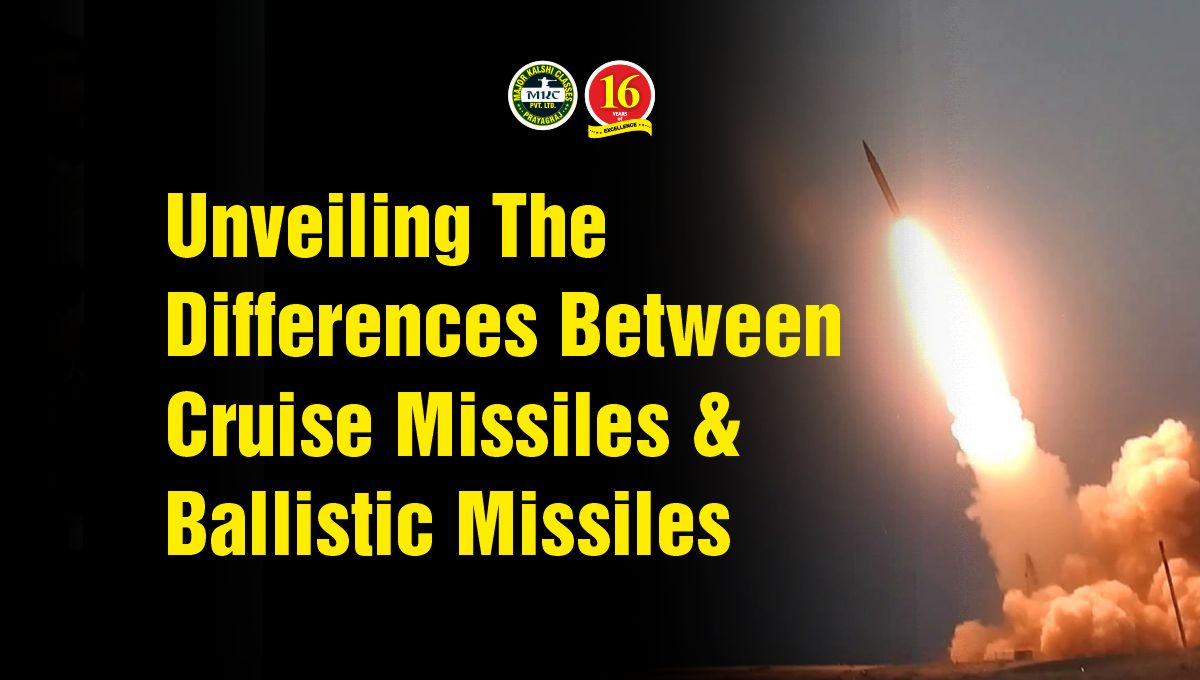Unveiling the Differences between Cruise Missiles and Ballistic Missiles
In today’s world, advanced missile technology plays a significant role in modern warfare and defense strategies. Cruise missiles and ballistic missiles are two distinct types of missiles with different characteristics and applications. In this article, we will explore the differences between cruise missiles and ballistic missiles, shedding light on their respective features, capabilities, and operational uses.
Differences between Cruise Missiles and Ballistic Missiles:-
Table of Contents
1. Flight Path and Guidance System:
One of the primary distinctions between cruise missiles and ballistic missiles lies in their flight paths and guidance systems. A cruise missile is designed to fly at low altitudes, following a predetermined and controllable path. It uses an onboard guidance system, often aided by GPS or inertial navigation, to maintain a specific course towards the target. This allows for greater maneuverability and the ability to navigate around obstacles during its flight.
On the other hand, a ballistic missile follows a high trajectory, initially propelled into the atmosphere and then descending towards the target in a parabolic arc. Ballistic missiles rely on their initial boost phase and follow a largely unguided path, governed by gravity and physics. Their flight path is characterized by high altitudes and extremely high speeds, making them difficult to intercept.
2. Speed and Range:
Cruise missiles and ballistic missiles differ significantly in terms of their speed and range capabilities. Cruise missiles generally have lower speeds compared to ballistic missiles, typically flying at subsonic or supersonic speeds. They are designed for extended ranges and can cover distances ranging from hundreds to thousands of kilometers, depending on the specific model and configuration.
In contrast, ballistic missiles are known for their incredibly high speeds. They can achieve hypersonic velocities, often reaching speeds exceeding Mach 5 (five times the speed of sound) during their descent phase. While ballistic missiles may have shorter ranges compared to cruise missiles, they can still cover considerable distances, including intercontinental ranges.
3. Targeting and Payloads:
Cruise missiles and ballistic missiles also differ in terms of their targeting capabilities and payload options. Cruise missiles are designed for precision strikes and can be guided towards specific targets using their onboard guidance systems. They are typically equipped with various types of warheads, including high-explosive, armor-piercing, or even nuclear warheads. This makes cruise missiles suitable for engaging specific targets such as infrastructure, military installations, or high-value targets with precision and accuracy.
In contrast, ballistic missiles are primarily designed for long-range attacks against larger targets, such as cities or strategic locations. While they can carry conventional or nuclear warheads, their targeting is often based on a general area or region rather than a specific target. Ballistic missiles rely on their high speeds and trajectories to deliver a large payload to a broad target area, relying on the destructive power of the warhead rather than precise targeting.
4. Launch Platforms:
Cruise missiles can be launched from various platforms, including naval vessels, aircraft, and ground-based launchers. They can be launched from submarines, surface ships, fighter jets, bombers, or even land-based mobile launchers. This versatility allows for flexibility in deployment and enables different branches of the military to employ cruise missiles based on their specific operational requirements.
In contrast, ballistic missiles are predominantly launched from fixed ground-based facilities, known as launch sites or silos. These launch sites provide the necessary infrastructure to launch and control ballistic missiles. The launch platforms for ballistic missiles are typically stationary and require extensive preparations before launch.
5. Reusability:
Cruise missiles are generally designed for single-use missions. Once they reach their intended target or complete their mission, they are typically not recoverable or reusable. This means that after launch, cruise missiles are either destroyed upon impact or self-destructed to prevent unauthorized access to the technology.
On the other hand, certain ballistic missiles, particularly those with shorter ranges, can be designed for reusability. These missiles are known as reusable ballistic missiles or reusable launch vehicles (RLVs). RLVs are capable of returning to Earth intact after completing their mission, allowing for refurbishment, refueling, and subsequent reuse for future launches. Reusability offers potential cost savings and operational advantages for certain ballistic missile systems.
6. Trajectory and Stealth Capabilities:
Cruise missiles often employ low-altitude flight paths to enhance their stealth capabilities. By flying at low altitudes, often hugging the terrain or using terrain-following techniques, cruise missiles can reduce their radar cross-section, making them harder to detect and intercept. This ability to fly at low altitudes allows cruise missiles to evade radar systems and defensive measures to a certain extent.
In contrast, ballistic missiles follow a high-trajectory path, typically traveling outside the atmosphere during their midcourse phase and reentering the atmosphere during descent. This high-trajectory profile makes ballistic missiles more vulnerable to detection and interception by advanced radar systems and missile defense systems. However, some ballistic missiles incorporate countermeasures and decoys to enhance their survivability against missile defense systems.
Conclusion (Cruise Missiles and Ballistic Missiles):-
Cruise missiles and ballistic missiles are two distinct types of missiles with different flight paths, guidance systems, speeds, ranges, and targeting capabilities. While cruise missiles are known for their controllable flight paths and precision strikes, ballistic missiles are characterized by their high-speed, high-trajectory profiles, and larger target coverage areas. Understanding these differences is essential to appreciate the unique roles and applications of each type of missile in modern warfare and defense strategies.








